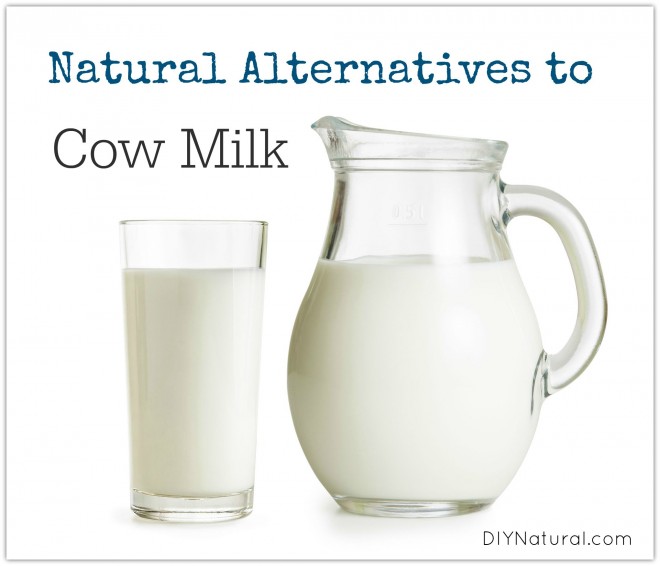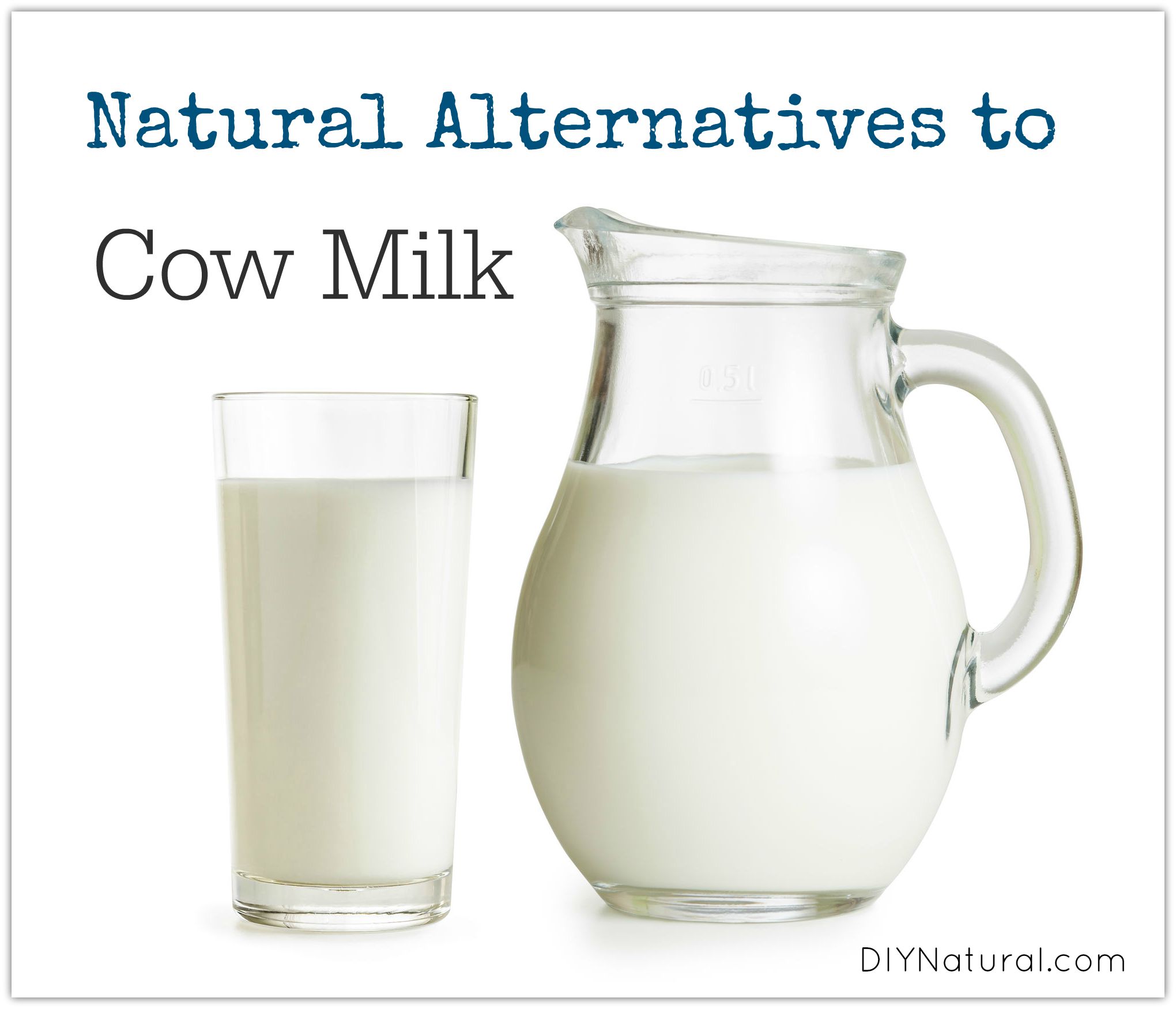
Like a lot of the population, I’m lactose intolerant. I don’t have it as bad as some: I can still eat cheese and yogurt, but some people can’t even eat those. There are pills you can take, digestive enzymes, or you can drink lactose free milk, but what about the other alternatives?
Milk Substitutes (Alternatives)
Other animal milks
Many people have a hard time digesting cow’s milk, but goat’s milk is much easier on the stomach. It is naturally homogenized, meaning that it won’t separate over time. It is richer, so those who need a fat free diet or those who are used to skim milk will probably want to find another milk substitute. With the higher fat content, it does make great milk-based soap!
Sheep’s milk is not as readily available, but there are some cheeses made with it. Some of the more popular cheeses are pecorino romano, manchego, feta, and ricotta. Look at your local health food stores and co-ops. You may also be able to find buffalo, yak, mare, or water buffalo milk where you live. Yes, there are many other animals that produce milk that can be consumed.
Nut and grain milks
While not true milks, there are many nut and grain milks on the market. You’ll want to be careful if choosing to drink a store-bought nut or grain milk, as many of them will contain added sweeteners, preservatives, synthetic vitamins, or artificial flavors.
- Soy milk is the most popular grain milk. It comes from soybeans that are soaked in water, ground, and then strained. The resulting milk is high in protein (2.86 grams per 100 grams of milk) and has no cholesterol. Note: DIY Natural does not promote the consumption of non-fermented soy products due to the plant estrogens and high levels of goitrogens regular soy products contain. If you must drink soy milk, it’s best to make your own in order to avoid GMOs, preservatives, and artificial flavors.
- Coconut milk is the liquid that comes from the grated flesh of the coconut. Don’t confuse it with coconut water, which is the liquid that gets trapped inside the hollow of the coconut while the fruit is forming. Coconut milk is higher in fat, but like soy, it has no cholesterol. If this is your milk alternative of choice, just be sure to purchase one without added sweeteners, preservatives, guar gum, or BPA-lined cans. (Find one here or learn to make your own here.)
- Almond milk is made like soy milk and has a nutty taste. It is thinner and more clear that soy milk, so you may need more in your coffee if used as creamer. The problem with store-bought almond milk is that it contains carrageenan, which is toxic and inflammatory for the digestive system, and synthetic forms of Vitamins A and D, both of which pose some health risks. You are better off making your own healthy almond milk (see recipe below!).
- Cashew milk is made by soaking cashews in water. After a while they dissolve and can be strained and used for milk. Again, this type of milk often contains various thickeners, preservatives, and synthetic vitamins, so making your own cashew milk is the better option.
- Hemp milk is made by soaking hemp seeds in water and grinding them, much like soy. Hemp is naturally high in protein and Omega-3 fatty acids. Making your own hemp milk is simple if you want to avoid certain ingredients in store bought varieties.
- Rice milk is great for those with allergies, but can sometimes be produced with potential allergens. Watch the label to avoid problems.
- Sunflower milk has just started being produced for retail sale. It comes from the sunflower seed.
- Other milks that may be available in your area are oat milk, quinoa milk, and a grain mix milk which uses several kind of grains.
Homemade Almond Milk
Here are instructions for making almond milk, although it can be adapted to other nuts or grains.
Ingredients
- 2 cups raw almonds (find raw organic almonds here)
- filtered water (find the best water filtration systems here)
- natural sweetener of choice, optional
Directions
- Place raw almonds in a glass bowl.
- Cover with 4 cups of water.
- Soak the almonds overnight. Drain the water off.
- Blend or use a food processor with 4 cups of fresh water. If it seems too thin, try less water next time.
- Add a natural sweetener if you like. I add a bit of stevia leaf to mine.
- Strain through cheesecloth or a nut milk bag. Be sure to work the pulp so you get all of the goodness out of the almonds. Squeeze the cheesecloth several times.
- Store in refrigerator for up to a week.
I freeze the pulp that is left and use it for smoothies or when I make granola. You could also use it in bread or muffins. Use as you would for coffee creamer, cereal, drinking, or other milk recipes.
Do you use milk alternatives? Have you found any that are better than others? Let us know!
*******




Most of us have been drinking cow’s milk since childhood, so drinking a substance that looks and feels like milk but has a much different flavor can be off-putting. However, if you are able to get past the difference, the alternatives can taste pretty good.
Great info. Thank you so much.
You’re welcome Rhoda!
I wish there was a link to Pinterest so I could save and share this good information.
Hi Kathy,
There is a “Pin it” button that appears just beneath the title of every article. You’ll also notice a “Pin it” button appear when you hover over the featured images for every article. Hope that helps!
Thanks Betsy, you got to it before I could!
An alternative to processed, big brand milk is to look for local, minimally processed or raw cow’s milk that often can be digested easier than most ultra processed milk found on grocery store shelves. The severe processing in the big brands destroys enzymes the body needs to be able to digest the milk. Although the following website does recommend a specific brand, I included the link to the testimonials because of the doctor’s recommendation for “using a common sense holistic approach to sensible, nutritious foods that promote wellness and prevent common disease states.” While this brand is locally for us, there may be others in your grocery store or whole food store. Like everything else, you must read labels, be informed, and know what you are feeding your family. http://hickoryhillmilk.com/index.php/testimonials/
Thanks for this, Dawn. I didn’t include raw milk because it’s banned here, but It is available in other areas. I’d love to get a hold of raw milk. Maybe they’ll lift the ban soon…
This particular brand is not raw, but is minimally processed, pasteurized whole milk. Sorry , that wasn’t clear.